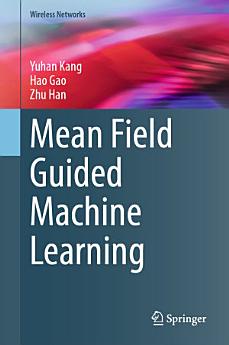આ ઇ-પુસ્તક વિશે
MFG theory and ML are converging to address critical challenges in high-dimensional spaces and multi-agent systems. While ML has transformed industries by leveraging vast data and computational power, scalability and robustness remain key concerns. MFG theory, which models large populations of interacting agents, offers a mathematical framework to simplify and optimize complex systems, enhancing ML’s efficiency and applicability.
By bridging these two fields, this book aims to drive innovation in scalable and robust machine learning. The integration of MFG with ML not only expands research possibilities but also paves the way for more adaptive and intelligent systems. Through this work, the authors hope to inspire further exploration and development in this promising interdisciplinary domain. With case studies and real-world examples, this book serves as a guide for researchers and students in communications and networks seeking to harness MFG’s potential in advancing ML. Industry managers, practitioners and government research workers in the fields of communications and networks will find this book a valuable resource as well.
લેખક વિશે
Dr, Yuhan Kang received the B.S. degree from the School of Information and Communication Engineering, University of Electronic Science and Technology of China, Chengdu, China, in 2019, and the Ph.D. degree with the Electrical and Computer Engineering Department, the University of Houston, Houston, TX, USA in 2023. Currently he is AI Research Scientist for Weichai America Corp. His research interest include mean-field game theory, machine learning, deep learning, Internet-of-Things networks, and optimization theory.
Dr. Hao Gao received the B.E. degree in electrical and information engineering from the Huazhong University of Science and Technology, Wuhan, China, in 2018, and Ph.D. degree in electrical engineering with the University of Houston, Houston, TX, USA in 2022. Currently he is senior Engineering in Samsung, California, USA. His research interests include mean field game, machine learning, and related applications in wireless communication.
Dr. Zhu Han received the B.S. degree in electronic engineering from Tsinghua University, in 1997, and the M.S. and Ph.D. degrees in electrical and computer engineering from the University of Maryland, College Park, in 1999 and 2003, respectively. Currently, he is a John and Rebecca Moores Professor in the Electrical and Computer Engineering Department as well as in the Computer Science Department at the University of Houston, Texas. Dr. Han received IEEE fellow since 2014, AAAS fellow since 2019, and ACM Fellow since 2024. Dr. Han is a 1% highly cited researcher since 2017 according to Web of Science. Dr. Han is also the winner of the 2021 IEEE Kiyo Tomiyasu Award (an IEEE Field Award), for outstanding early to mid-career contributions to technologies holding the promise of innovative applications, with the following citation: for contributions to game theory and distributed management of autonomous communication networks.






